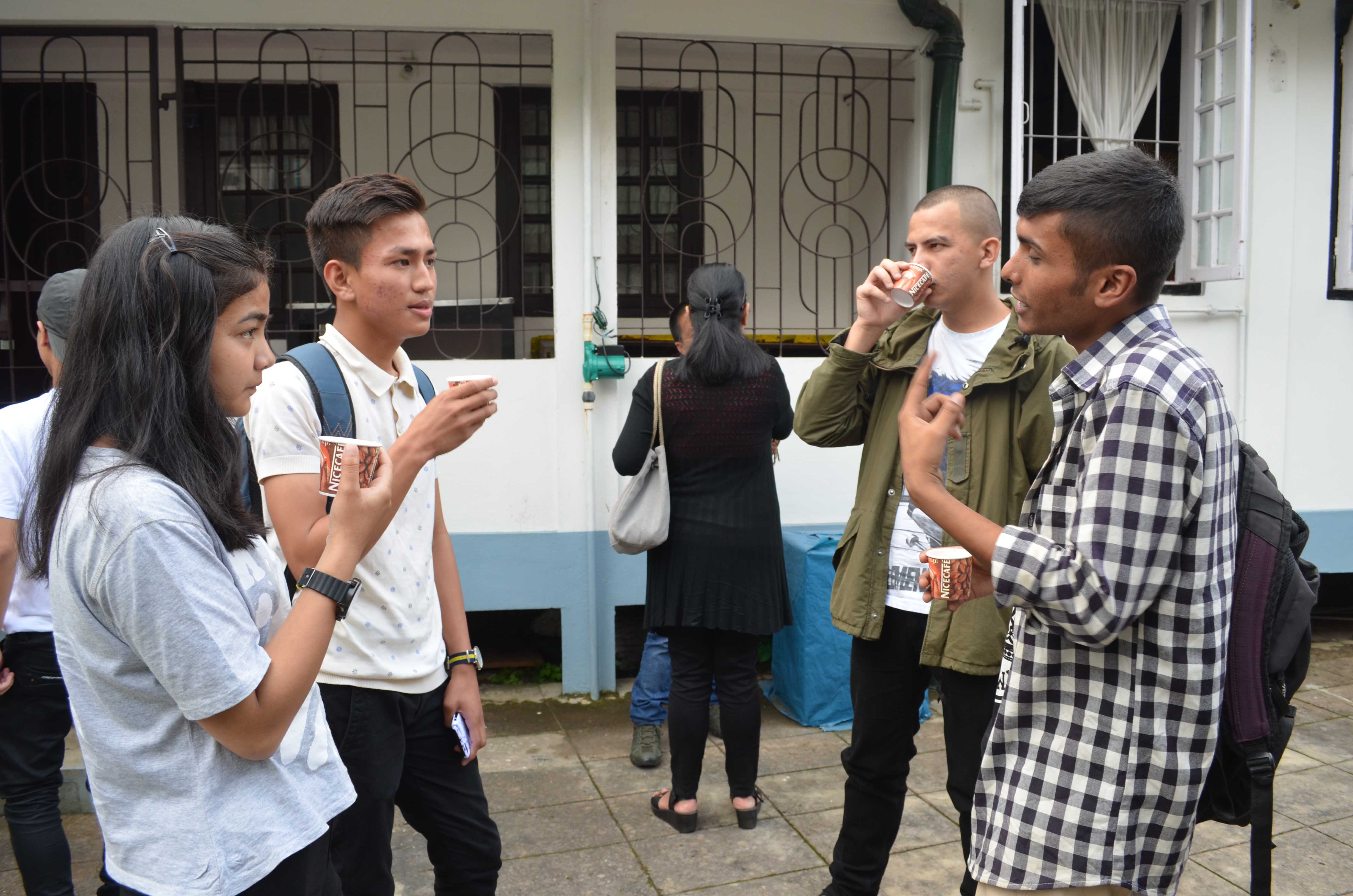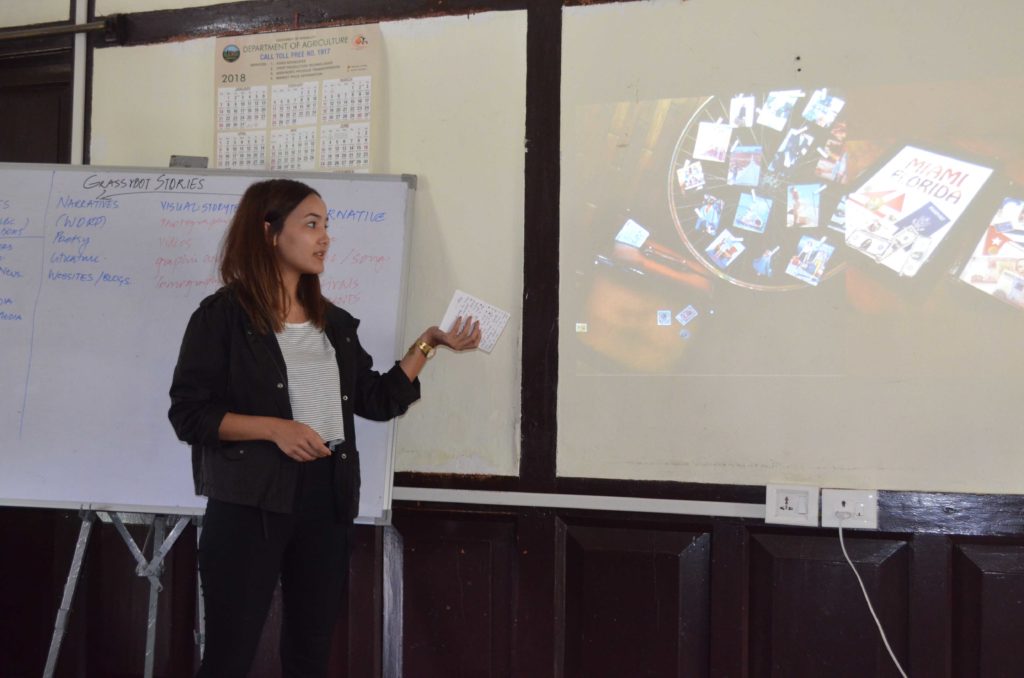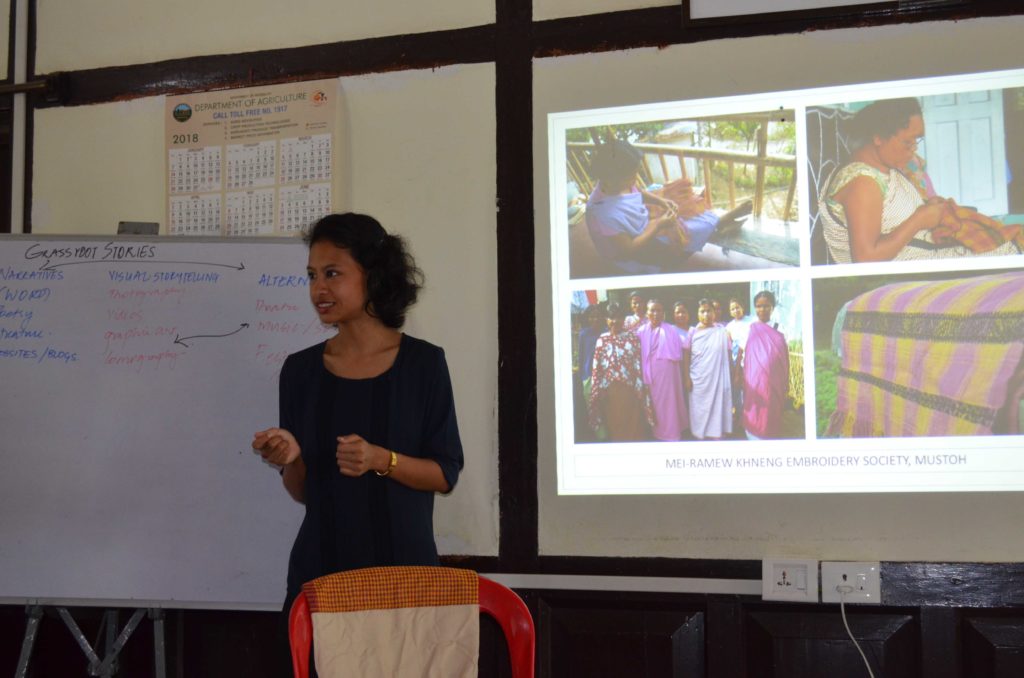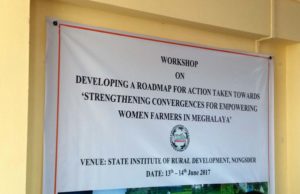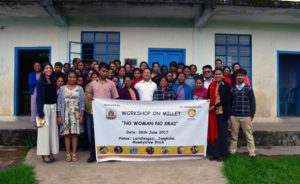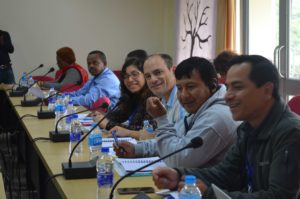Young story tellers come together to create storyboards for indigenous messages at a storytelling workshop at NESFAS.
What started as a sharing of work over cups of teas on the 13th and 14th July under the title “Tea Time Stories”, on 16th July 2018 became a day of finding a platform for sharing indigenous folklore and artisanal knowledge which need urgent attention. Can the art of storytelling revive a culture? Can the work of contemporary writers, artists, musicians, lyricists, graphic artists, videographers give a sense of pride to the indigenous farmers. Can the creative talent of the youth create new avenues of livelihood for the artisans in the village? A three days storytelling workshop was held in NESFAS on the 13th, 14th and 16th July 2018. This workshop is aimed at identifying young local talents who are interested in storytelling.
The first two days anchored around “Tea-time Stories” sessions which aimed to discover grassroutes between heritage in our farming villages and lifestyles today.
Benjamin Syiem shared an intricately styled sketch that captured the animated horror of the age old Khasi mythological story of “U Khoh Ramhah” where a lady farmer fights of the terror of a giant by dishing up a pot of food with nails that led to the latter’s demise. For Nocy Marak who explores graphic design and content writing to find her Garo heritage the sessions became a point at which people come together to contribute in strengthening the cultural roots of the people. Said Nocy “It’s a great event where we have all the creative people under one roof and throwing of ideas of how we can revive the old cultural ways, which is not being done before on an open forum”.
The gathered group split up into four groups and one individual to create a creative communication which strategically addressed issues surrounding the indigenous communities of North East India.

The themes explored were: The Eri Silk story and a future branding story for it in the current times; A short film cut which aimed to capture the Garo dish “Do’o Kap’a” from the hands of Siegfrid B Sangma, an architect who is looking to discover his roots through the dish he creates for friends and family. The documentation team of Ridalin Shullai, Amorette Lyngwa, Abigail Nongsiej, and, Risa L Kharmawlong worked intently to not just work out the ingredients as in a cookery show but capture the dish’s place in the lives of the Garo tribe.
Tengnang D Sangma, a singer and researcher on indigenous heritage stepped out of the workshop to explore the market for ethno medicine ties. He brought back these medicines to the workshop platform to share how the touch feel of these plants have ties to folklores and also have a medicinal value. He saw possibilities of capturing their value in stories and in health to find their future in new times. Mayborn Lyngdoh, Adarsh Biswas and Subham Kumar worked as a team to write the script for a short story, a poetry and a theatre piece respectively, which will allow them to sow the seeds of indigenous values and products in the minds of their audiences.
The workshop involved the participants in identifying and using their own ways of documenting and sharing “archives of the local land, life, resources and culture.” They came up with ideas for targeting issues on the local weaves sector, Khasi traditional food and games, ethno medicine and cultural relations, and many wider range of topics surrounding the region. The workshop also served as a platform for story tellers; writers, photographers, visual artists, and many more, to come together and share their stories and ideas. The participants have decided to stay connected and work together in the coming days to identify issues that needs to be shared and documented for a much wider audience.



